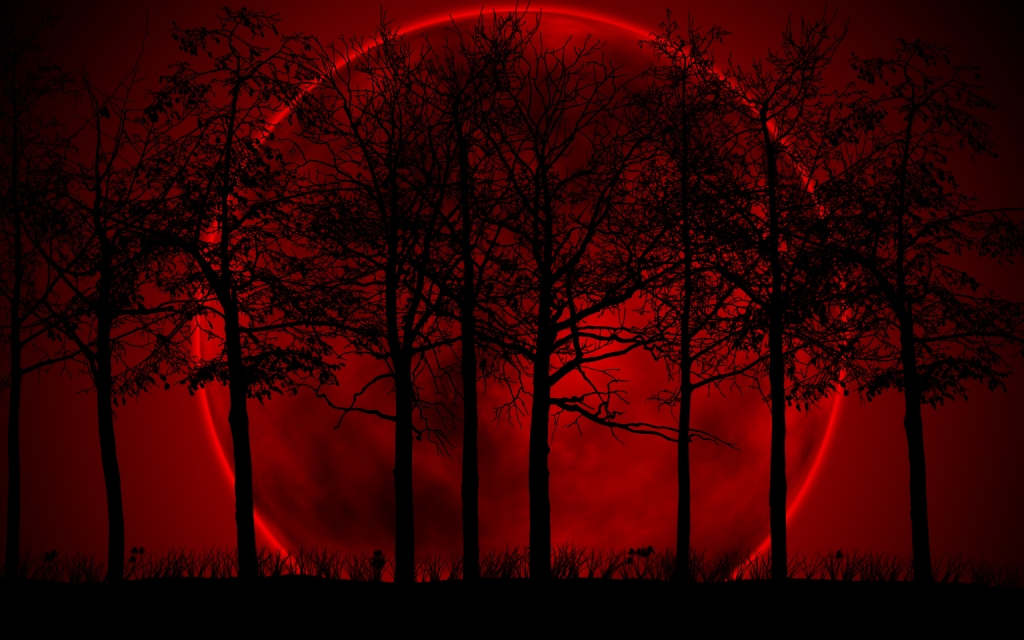
The blood-red moon hung heavy in the pitch black sky. It's beauty was broken only by the piercing wind that threw dried golden leaves across its palette.
Umm...Yeah. Not quiet the best I could do, but I think, in a way, it gets the point across. Some description is good, too much is well...not good. For me I always thought my issue was not enough description, but as I continue reading Jack Bickham's The 38 Most Common Fiction Writing Mistakes, I wonder if my problem is really not recognizing description when I write it.
When I think of description the example I gave above is what comes to mind, describing the setting, setting the mood. Yet in Bickham's book he discusses that description is really just a pause in the action to tell the reader what things look like, what the characters are thinking and feeling. I've had a lot of reviews that tell me to describe more - but they are suggesting more details to the surrounding, something I readily admit I sometimes skip. My real issue comes with character thoughts and feelings. I have no difficulty doing this, in fact looking back at reviews from the first version of The Evolution of Janie, I was called out on it a number of times.
For myself, I find it hard to take out character thoughts and feelings since I'm writing in first person. How do you not include thoughts and feelings when you're supposed to be the character? It was a question I've asked myself a lot after reading Chapter 6: Don't Describe Sunsets. But I think I may have figured it out by referring back to his previous chapter about warming up your engine. Instead of worrying about thoughts and feelings I need to focus on what those thoughts and feelings address. In my original draft I used Janie's thoughts to give back story, a lot of back story which in addition to taking the reader out of the action it took them backwards instead of forwards. Overall, I think I've fixed this in my opening chapters, but I'm not done. I need to go back and reread, searching for little bits that repeat, that just don't move us forward.
Just one more thing to add to my editing/revision to do list!!
On my iPod:
Wake Me Up When September Ends by Green Day

Hm. I might need to read that Bickham book...
ReplyDeleteThe big thing I notice with overuse of description is in dialogue tags. Also, even though her older books are like crack for me, Nora Roberts is an excellent example of too much thought/emotion. Dialogue, should you use it, can easily show the tone of the character through carefully chosen words. Gestures one makes during these times, their thoughts... unless they're vital to the story then many can be taken out. In "The Road" McCarthy's style conveyed how sparse a story could be while still communicating emotion. Well, at least in my opinion he did. ;-) Good luck with your revising!
ReplyDeleteInteresting post -- I know that one of my weaknesses is providing too much description and not enough action. Time to check out that book!
ReplyDeleteReaders tend to skip parts that don't directly involve the characters. So for example you don't describe the sunset and then mention the characters are kissing, you link them together - 'the light of sunset turned her face golden and impossibly perfect for a few moments, and he thought as he kissed her that she was more beautiful than she could ever know.' (OK so that's a bit cheesy, LOL). A good sentence will make a strong mental image, because a mental image contains a juxtaposition of object and subject (thing/situation and a person making an action) exactly the same as a proper sentence should. I have found my favourite authors tend to sweep you off into your imagination with even the briefest of descriptions simply by linking everything to the characters' sensations/emotions/thoughts.
ReplyDelete